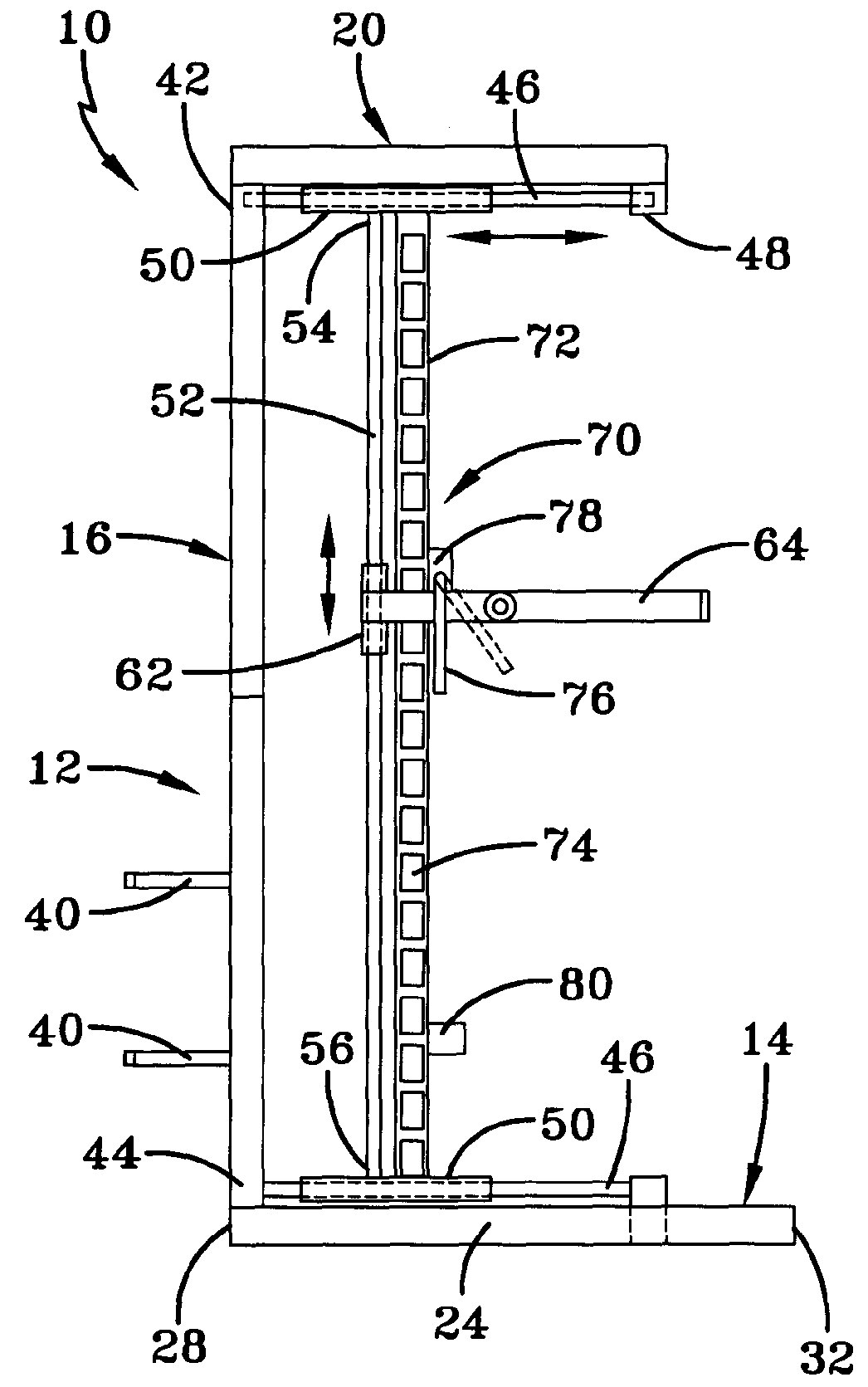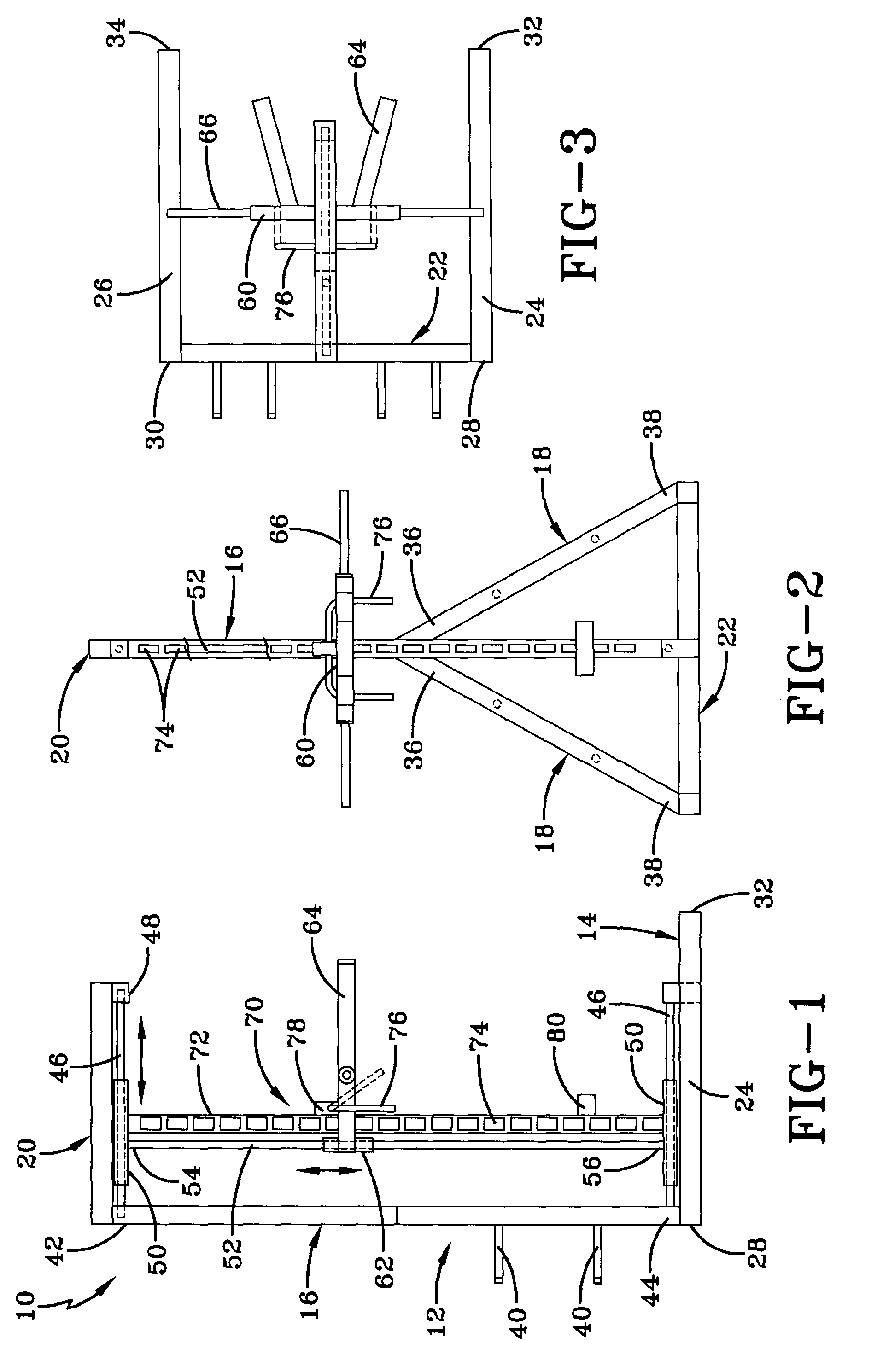Standing weightlifting apparatus
a weightlifting machine and standing technology, applied in the field of exercise equipment, can solve the problems of not being able to allow a weightlifter, many weightlifting machines cannot perform all the functions of a spotter, and the spotter is not always available, so as to improve the strength of the muscles, prevent the injury of the weightlifter, and improve the isolation of the muscles
- Summary
- Abstract
- Description
- Claims
- Application Information
AI Technical Summary
Benefits of technology
Problems solved by technology
Method used
Image
Examples
Embodiment Construction
)
[0017]The overall arrangement of an exemplary construction of the standing weightlifting apparatus 10 of the present invention is shown in FIG. 1. The present weightlifting apparatus has a frame 12, horizontal and vertical guide members 46, 52 respectively, a weight-bearing bar 60, a shoulder bar 64, and a safety catch mechanism 70.
[0018]The frame 12 is comprised of a base 14, an upright support member 16, angled support members 18, and a top member 20. The base 14 may have a back member 22 and two side members 24, 26, respectively. The first end 28, 30 of each side member 24, 26 may attach to each end of the back member 22, while the second end 32, 34 of each side member 24, 26 may remain free. The side members 24, 26 may be parallel to each other and perpendicular to the back member 22 of the base 14.
[0019]In this exemplary embodiment, an upright support member 16 is located perpendicular to and near the midpoint of the back member 22 of the base 14. Two angled support members 18...
PUM
 Login to View More
Login to View More Abstract
Description
Claims
Application Information
 Login to View More
Login to View More - R&D
- Intellectual Property
- Life Sciences
- Materials
- Tech Scout
- Unparalleled Data Quality
- Higher Quality Content
- 60% Fewer Hallucinations
Browse by: Latest US Patents, China's latest patents, Technical Efficacy Thesaurus, Application Domain, Technology Topic, Popular Technical Reports.
© 2025 PatSnap. All rights reserved.Legal|Privacy policy|Modern Slavery Act Transparency Statement|Sitemap|About US| Contact US: help@patsnap.com


